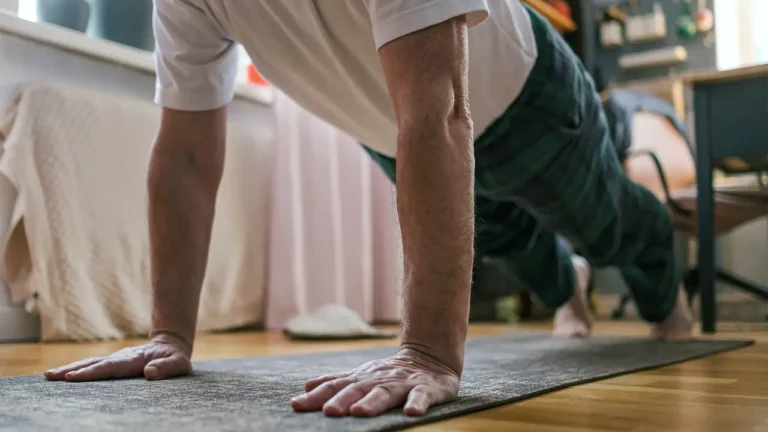A stroke occurs when blood flow to part of the brain is blocked or a blood vessel ruptures. Without oxygen, brain cells begin to die within minutes, which can lead to loss of movement or sensation, difficulties with speech or vision, and—after severe events—loss of consciousness or death.
Why men should care
Several conditions and habits make stroke more likely: high blood pressure, diabetes, high LDL cholesterol, smoking, obesity, physical inactivity, atrial fibrillation, and advancing age. A family history of cardiovascular disease can add to the risk. The good news: many of these factors are modifiable, and regular physical activity is one of the most effective tools men can use to lower risk.
How exercise lowers stroke risk
- Lowers blood pressure—the single biggest driver of stroke.
- Improves insulin sensitivity and helps prevent or manage type 2 diabetes.
- Raises HDL (“good”) cholesterol and improves overall lipid profiles.
- Supports a healthy weight and reduces visceral fat.
- Reduces inflammation and improves blood vessel function.
Large studies consistently show that physically active adults have a substantially lower stroke risk (often in the 20–30% range) compared with inactive peers.
How much and what kind of exercise?
Aim for the well-studied baseline of about 150 minutes of moderate activity per week (e.g., brisk walking, cycling, swimming), or 75 minutes of vigorous activity, plus two sessions of muscle-strengthening work.
- Aerobic (“cardio”): brisk walking, cycling, swimming, jogging, rowing—anything that raises your heart rate.
- Strength training: two non-consecutive days targeting major muscle groups (bodyweight, free weights, or machines).
- Balance & mobility: especially important as you age to reduce falls and keep you active.
Getting started safely
If you’ve been inactive, start low and go slow: 10–15 minutes of easy walking most days, then build by 5–10 minutes each week. Use the “talk test”—you should be able to speak in short sentences while moving. Protect your progress with these injury-prevention tips.
Exercise helps at every age
Mid-life is a crucial window for prevention, but older men benefit too. Regular activity improves stamina, balance, and independence, and it helps control blood pressure, blood sugar, and weight. Pair exercise with smart lifestyle habits—blood pressure checks, limiting alcohol, not smoking, and nutritious eating. For a practical overview, see our guide to healthy living for middle-aged men.
When to speak with a clinician
Check in with your healthcare professional if you have chronic conditions (e.g., heart disease, diabetes, severe hypertension), are recovering from illness or surgery, or experience chest pain, unexplained shortness of breath, or dizziness during activity.
Know the warning signs of stroke (FAST)
- Face drooping
- Arm weakness
- Speech difficulty
- Time to call emergency services immediately
Authoritative resource
For a comprehensive overview of stroke risk factors and prevention, the American Heart Association provides regularly updated guidance.
Bottom line: even modest, consistent movement pays big dividends. Build a routine you can sustain, keep tabs on the classic risk factors, and your brain—and heart—will thank you.

